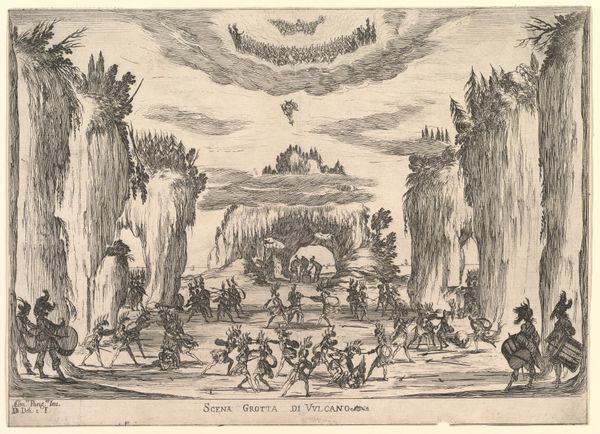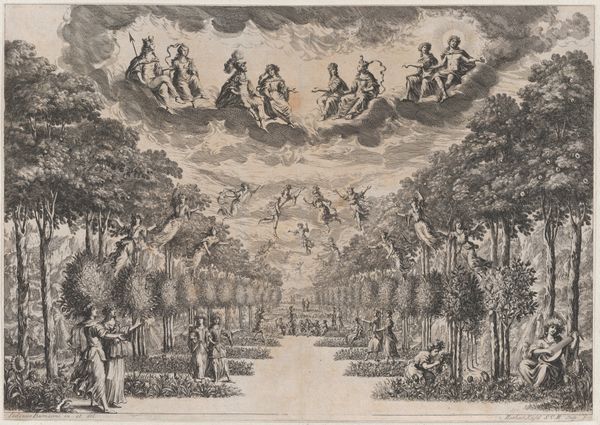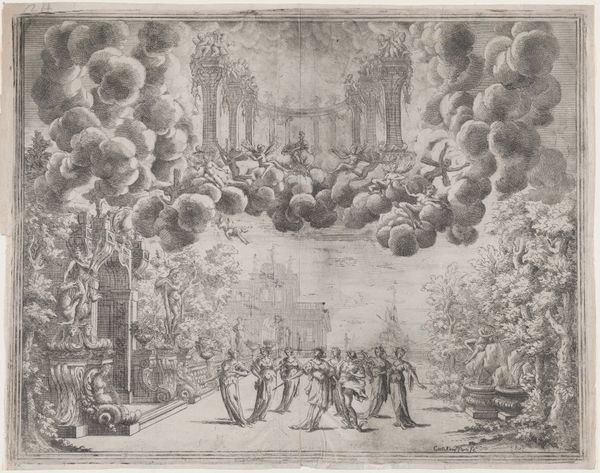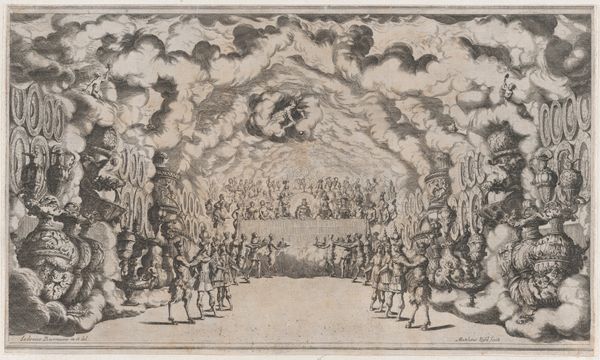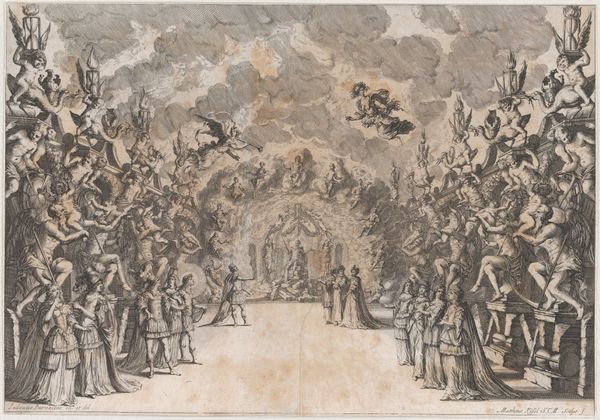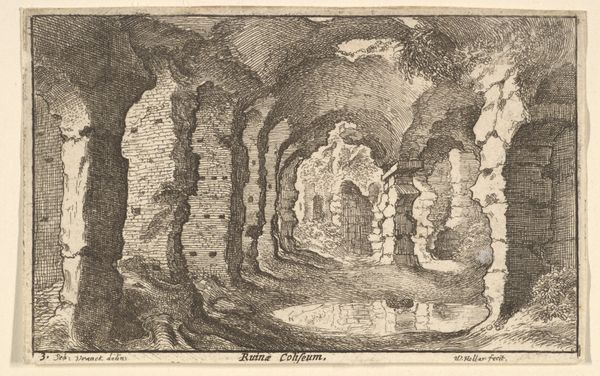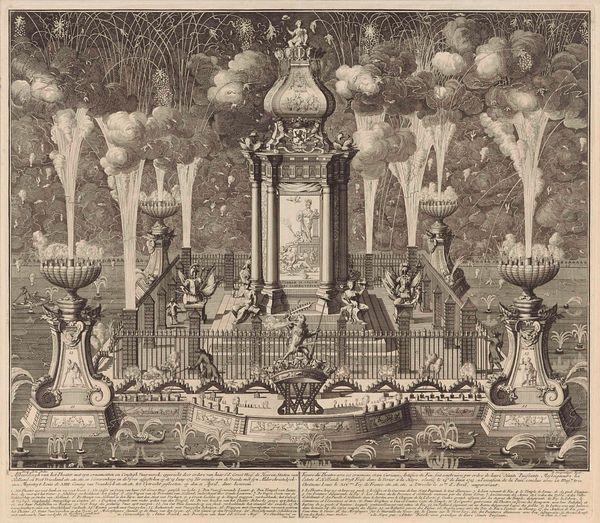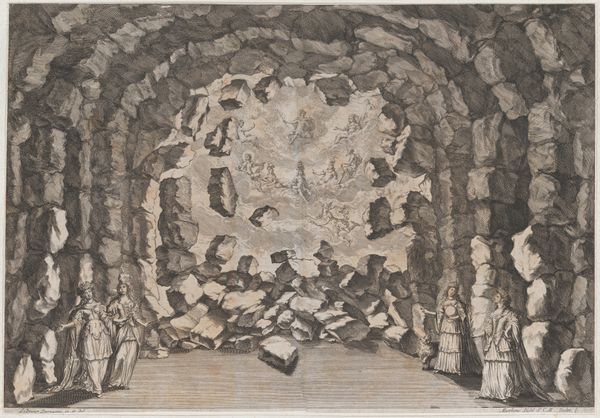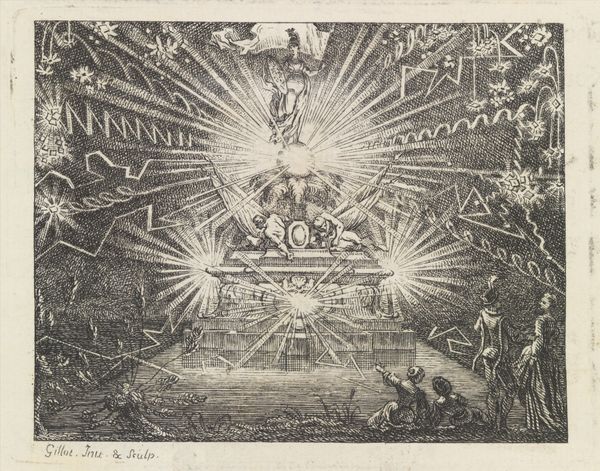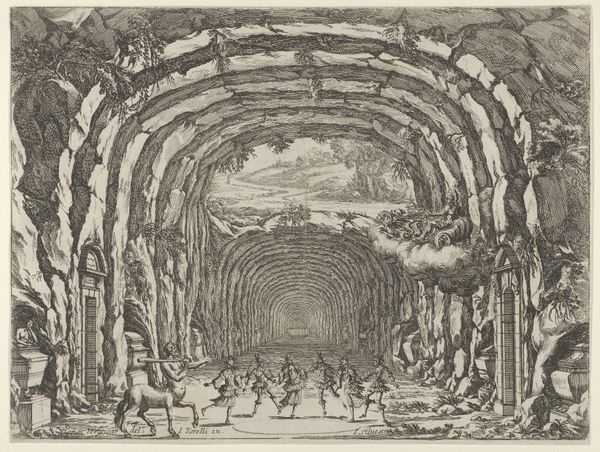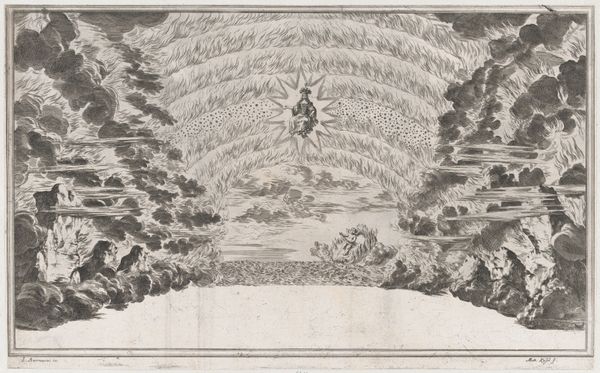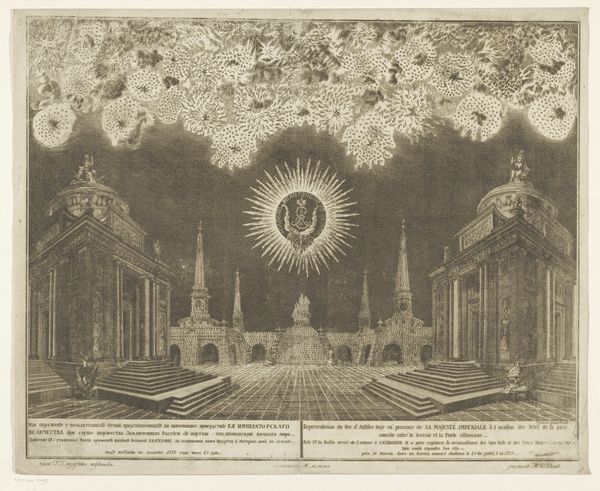
Design for a theater set created by Giacomo Torelli da Fano for the ballet 'Les Noces de Thétis', from 'Décorations et machines aprestées aux nopces de Tétis, Ballet Royal' 1654
0:00
0:00
drawing, print
#
drawing
#
allegory
#
baroque
# print
#
cityscape
#
history-painting
Dimensions: Sheet (Trimmed): 8 15/16 × 11 15/16 in. (22.7 × 30.3 cm)
Copyright: Public Domain
Curator: What a fascinating print! This is Israel Silvestre's rendering of Giacomo Torelli’s stage design for the ballet “Les Noces de Thétis” from 1654, a period dripping in Baroque splendor. Editor: It’s dreamlike. The receding architecture amidst all those cloud-like puffs – is it smoke, vapor, divine presence? The scale is warped, almost dizzying. Curator: Absolutely. Silvestre captures the theatrical illusion of Torelli’s set designs beautifully. The receding perspective, with figures dwarfed by monumental architecture, underscores a sense of grandeur. Look at how the eye is drawn towards a vanishing point bathed in an ethereal glow. Editor: The light certainly defines the piece, doesn't it? Pools of illumination highlight small groups of dancers against cavernous shadowy structures. Tell me, is there some allegory here? Some kind of symbolic reading we should be doing? Curator: Indeed. This ballet celebrated the marriage of Louis XIV. The stagecraft wasn't just entertainment. It projected an image of power and magnificence. Thétis, a sea nymph, marrying a mortal mirrors, in allegorical fashion, the divine sanction of Louis’s reign. The cityscape suggests control, the masses participating in celebrations under watchful gaze of the crown. Editor: It strikes me that the setting looks more Roman than Greek despite the Thétis subject matter, wouldn't you agree? So even with a sea nymph the visual association goes straight to empire building in France. Curator: You've hit upon an interesting aspect, that is Baroque sensibilities mingling classical themes with political messaging. Silvestre manages to convey not just a visual spectacle, but a socio-political one, highlighting both performance design and royal messaging in visual harmony. Editor: What strikes me most is how effectively he suggests the ephemeral nature of theatre using permanent mediums, capturing both design and the performative event in equal measure. Curator: A fine observation. It preserves a moment of artistic and political theater that, but for engravings such as this, might have faded entirely from collective memory. Editor: Quite true. Thank you for these added contexts that really frame the visual complexity.
Comments
No comments
Be the first to comment and join the conversation on the ultimate creative platform.
